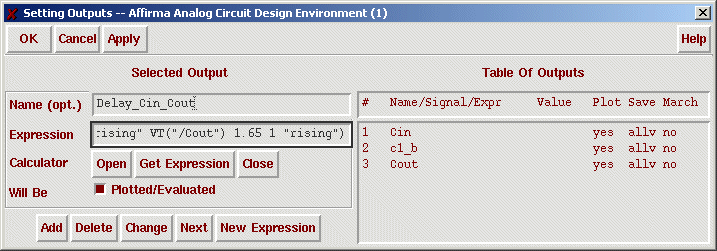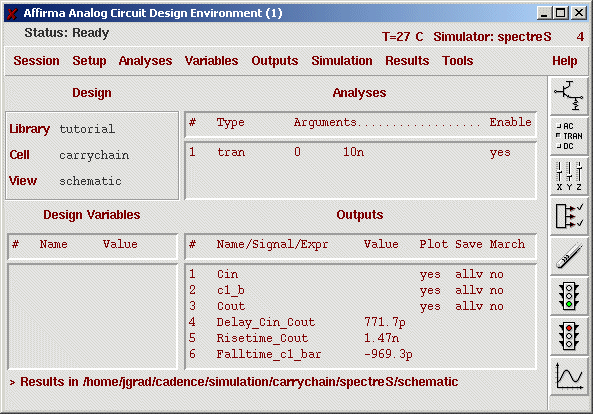Measuring Digital Properties using Spectre
Measuring Signal delay
In Analog Artist, do "Outputs | Setup..." to get the following window:

Give the measurment some nice name and type the following command in the "Expression" line:
This measures the time difference from the midpoint (3.3Volts / 2) of the first rising edge of the transient voltage of "Cin" to the midpoint of the first rising edge of "Cout". It can be customized to many different situations by selecting a higher edge count and by substituting "rising" with "falling" or "both".
After you entered the expression, hit the "Add" button to add it to your "Table of Outputs", then close the window with "Ok".
Then hit the "Plot..." icon ![]() and you should see the number (around 774ps) right in your output list. So there is no need to open the waveform and place markers any more.
and you should see the number (around 774ps) right in your output list. So there is no need to open the waveform and place markers any more.
Measuring Rise/Fall time
You can repeat and apply the function to the "c1_b" signal by entering:
riseTime(VT("/c1_b"),0,nil,3.3,nil,10,90)
This time the result will be negative, since "c1_b" actually starts out with a falling transition.
